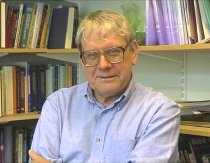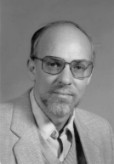Vor fast 100 Jahren, im April 1904, traf sich in Giessen eine Gruppe von Psychologen,
unter anderem G.E. Müller, H. Ebbinghaus, S. Exner, O. Külpe, C. Spearman, N. Ach, and W. Stern,
zu einem wissenschaftlichen Austausch. Unter der Initiative von Robert Sommer, der Professor für
Psychiatrie in Giessen war, wurde damals die Deutsche Gesellschaft für experimentelle Psychologie
gegründet.
Mit dem Symposium "100 Jahre experimentelle Psychologie" feiern wir diesen Jahrestag im Rahmen der TeaP 2004
mit einem wissenschaftlichen Symposium, bei dem eine kleine Anzahl internationaler Gäste über den Stand der
wissenschaftlichen Forschung in verschiedenen Bereichen der Experimentellen Psychologie berichten werden. An das
Symposium schließt sich der Gesellschaftsabend im Giessener Kongresszentrum an.
 |
 | |
|
 |
 |
|
40 Jahre Kognitive Psychophysiologie: Was hat es gebracht - nur Kurven und bunte Bilder oder mehr?
|
Frank Rösler
Department of Psychology
Philipps-University
Gutenbergstraße 18, 35032 Marburg
roesler@staff.uni-marburg.de
|
|
1964 publizierte Gray Walter die erste Arbeit, in der ein
klarer Zusammenhang zwischen einem physiologischen Signal (einer
Komponente im ereigniskorrelierten Potential des EEG) und einem
kognitiven Konstrukt (Erwartung) nachgewiesen wurde. Er legte damit
den Grundstein für die Forschungsrichtung der Kognitive
Psychophysiologie. Seitdem sind Tausende von Arbeiten erschienen, in
denen Zusammenhänge zwischen Biosignalen und kognitiven Prozessen
untersucht wurden. Zunächst waren dies bevorzugt Komponenten des
ereigniskorrelierten Potentials im EEG, in neurer Zeit sind es
BOLD-Reaktionen im Kernspin. In dem Beitrag möchte ich die
Forschungslogiken darstellen, mit denen man Kognitive Psychophysiologie
beitreibt - diese variieren je nach bevorzugtem Biosignal - und ich
möchte an Beispielen erläutern, ob der Forschungsansatz wirklich mehr
gebracht hat als die von Experimentalpsychologen primär eingesetzte
Reaktionszeitanalyse.
|
Zum Seitenanfang
|
The study of human memory: Past, present and future
|
Alan Baddeley
Department of Psychology
University of York
York, YO10 5DD
A.Baddeley@psychology.york.ac.uk
|
|
Theories of human memory have changed dramatically over the years. A brief account of these changes will be given, with particular emphasis on fractionation into subsystems and to the development of the concept of working memory. Potential future developments will be discussed, with particular reference to the development of links between the study of memory and other related areas of psychology, philosophy and neuroscience.
|
Zum Seitenanfang
|
Computational Neuroimaging: Cortical Color Responses in Human
|
Brian A. Wandell
Stanford University
Psychology Department
Stanford, CA 94305
wandell@stanford.edu
|
|
Color has been an excellent model system for developing a quantitative understanding of visual perception. We understand a great deal about the physical signal that initiates color perception, and this knowledge has led to a precise understanding of the retinal encoding of the color signal. This understanding, in turn, is the basis of quantitative models of color matching (a key element of all color technologies), and the neural origins of several key properties of color appearance.
Our group is using functional neuroimaging to extend quantitative models of the retinal encoding to signals in human visual cortex. To engage this work, it is necessary first to understand the organization of visual areas, small regions of visual cortex that contain spatial maps of the visual world. I will describe how we obtain such maps using functional magnetic resonance imaging, and I will summarize our current understanding of the maps in human visual cortex.
To appreciate how the brain forms the perception of color, it is further necessary to understand how signals from the various cone photoreceptors and retinal pathways are combined within these visual areas. Towards this goal, I will describe measurements of responses to color in human cortex. The responses to colored stimuli differ across cortical areas, and some of these differences can be understood in terms of different rules for combining the retinal signals. By understanding these differences we aim to distinguish between the neural processes designed to capture the perception of color from those processes, such as motion perception, that use color information for other tasks.
Joint work with Alex Wade, Junjie Liu, and Alyssa Brewer.
|
Zum Seitenanfang
|
Space constancy: The gradual dissolution of perceptual compensation
|
Bruce Bridgeman
Psychology Department
University of California
Santa Cruz, CA 95064
bruceb@cats.ucsc.edu
|
Bruce Bridgeman studies spatial aspects of vision. His research has clarified the relationships between two distinct representations of visual space in the brain, one underlying visual perception and the other controlling visually guided behavior. In the laboratory, these two aspects of visual processing have been isolated, with different spatial values assigned to each representation. The behavioral system has been shown to be unconscious and to have no memory, but it codes position accurately even when the perceptual system codes position inaccurately.
Bridgeman has developed a simple "eyepress" method for separating the motor commands to the eye from the position of gaze in space. The method has been adapted to investigate the role of motor commands in visual function and the role of visual backgrounds in spatial orientation.
Another interest in Bridgeman's laboratory is spatial processing associated with eye movements. The group is investigating distortions of space perception caused by eye movements across flickering computer terminal displays. The group has made recommendations of formats that minimize such distortions.
|
Zum Seitenanfang
|
Emotion: From the Subjective Self to the Synaptic Brain
|
Joseqh Ledoux
Center for Neural Science
New York University
4 Washington Place; New York, NY 10003-6621
ledoux@cns.nyu.edu
|
|
In modern science, mental life is viewed as a product of the brain. But until recently, emotions were treated differently, as subjective states of experience un-analyzable in terms of brain mechanisms. While there are aspects of the mind, including the emotional mind, that remain outside the scope of scientific research, there are many aspects of emotion that are readily studied scientifically. Fear is an especially good example. There are more than 30 words in English that refer to variations in the subjective experience of fear in humans, but there is a fairly uniform mode of fear expression that occurs across a wide range of threatening situations. This biological response to danger is a central and defining feature of fear, and is not under conscious control. Any approach to fear that starts from conscious experience cannot account for these unconscious processes in the brain, which are better assessed through behavioral and physiological measures. Moreover, because the human brain and body respond in a manner that is very similar to the responses that occur in other mammals, we can study the neural basis of fear in animals and apply it to the human brain. Work of this type has successfully elucidated the brain pathways involved in detecting and responding to threatening stimuli, in learning about novel threats, and in forming memories about such experiences. The pathways involve transmission of information from sensory processing areas in the thalamus and cortex to the amygdala. The lateral nucleus of the amygdala receives and integrates sensory information and sends the outcomes of its processing to the central nucleus, both directly and by way of intervening synapses in the amygdala. The central nucleus, in turn, is the interface with motor systems controlling fear responses of various types (behavioral, autonomic, endocrine). Sites of plasticity within this circuitry, and the cellular mechanisms involved, have also been identified. These mechanisms operate independent of the mechanisms by which we consciously experience fear and explain why it is so difficult to gain conscious control over fears. At the same time, an understanding of these mechanisms gives us tools for asking what goes on in the brains of people with pathological fear when they are exposed to threatening stimuli, and whether the pathological brain states can be reversed through therapeutic intervention, and if so, determine which forms of therapy work best. Studies of fear have become a paradigmatic example in neuroscience of how to explore the neural basis of mind and behavior, and how to apply basic science findings to help understand the human brain.
|
Zum Seitenanfang
|
|





